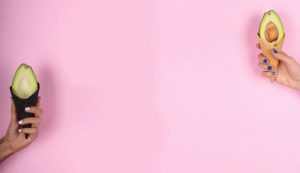
Psychology of food: not as simple as ‘in’ vs ‘out’
For anyone that’s tried to lose weight you will know that it’s not a simple equation of ‘less in, more out.’ For years we’ve been told losing weight is as simple as eating less and moving more, so why are we as a nation fatter than ever?? It can’t be that simple is the plain reason.
 The moment we tell ourselves that we can’t have this food, or that dessert, what do we do? We obsess about not having that thing, feel deprived, depressed and hard done by, until the little voices in our heads gently hint in our ear – ‘what if we just ate what we wanted today, and started again tomorrow’, or worse ‘eat whatever I want this week and start again on Monday’!
The moment we tell ourselves that we can’t have this food, or that dessert, what do we do? We obsess about not having that thing, feel deprived, depressed and hard done by, until the little voices in our heads gently hint in our ear – ‘what if we just ate what we wanted today, and started again tomorrow’, or worse ‘eat whatever I want this week and start again on Monday’!
This is binge eating at its worst, and it doesn’t stop, because human beings do not like to be depraved.
Whilst our minds play their own certain tricks, it’s interesting to note that our bodies are also designed to like certain foods, and not like others. It’s not surprising that many of our habits around food are learnt in early childhood, but many would be shocked to know that we actually determine many of our food preferences in the womb!
Whilst our preference for salty and fatty foods is likely to be acquired, it appears we are born with a liking for sweet foods – a mechanism of the body that we know was designed to help our ancestors choose the right foods to eat. So our animal instincts, combined with what our mother ate during pregnancy and the foods she fed us as we grew up are the foundation to our eating behaviours for life.
The earlier we learn those behaviours the harder it is to crack, unfortunately.
Numerous studies show that restrained dieting does not work. If you’ve spent years yo-yo dieting only to regain the weight (and some) then you are not alone. The statistics back it up – less than 12% of those that amended their eating habits maintained it for longer than 6 months, which is a real shame, because it appears that 6 months is the time length required for permanent behavioural change.
What works is modifying the foods you choose to eat – choosing foods that are nourishing for your body, are delicious and that make you feel satisfied.
Before we dive in, I’d like you to introduce you to the correct usage of the terms ‘liking’ and ‘wanting’. I can like chocolate but after my 10th piece I may not want any more. ‘Liking’ appears to be easier to amend whereas ‘wanting’ is more deeply ingrained. Therefore we must work on changing the foods that we like. Easy peasy, right? Let’s see…
I’m sure I’m not telling you anything new when I say food should be pleasurable.
We need to eat to survive, therefore nature very conveniently made food taste good. But palatability actually goes much deeper than that. The feel good chemicals (specifically opioids) created in our brain when we eat a pleasurable food can in fact override natural cues of satiety, or fullness. This is the reason why it’s so easy to over-eat your favourite guilty food pleasures and almost impossible to overeat salads or stir-fry’s. Not surprisingly, these chemicals are addictive and our bodies therefore develop cravings in order to experience that feel good moment again. The palatability of a food is highest as well when we’re depraved of that food, and lowest after we’ve consumed it – so it makes sense that the anticipation of a food is often better than the real thing!
The good news is we can train our taste-buds to like different foods.
How long does it take, you ask? Short answer: it depends on the taste type. There are a few things we do need to cut down on (no if’s or but’s, pardon the pun!)
 Salt is one. Diets high in salt cause high blood pressure and raise the risk of heart disease. We do need a small amount of salt for electrolyte balance but most westerners take in far too much than is healthy, so reduction is the only way forward. Once we start to cut down on salt research has shown that we can lose our ‘liking’ for salty foods relatively quickly. We have salt receptors on our tongues that lose sensitivity if they’re not activated over a period of time so our taste-buds adapt very quickly to a low salt diet and the cravings disappear in a few short weeks.
Salt is one. Diets high in salt cause high blood pressure and raise the risk of heart disease. We do need a small amount of salt for electrolyte balance but most westerners take in far too much than is healthy, so reduction is the only way forward. Once we start to cut down on salt research has shown that we can lose our ‘liking’ for salty foods relatively quickly. We have salt receptors on our tongues that lose sensitivity if they’re not activated over a period of time so our taste-buds adapt very quickly to a low salt diet and the cravings disappear in a few short weeks.
 Sugar is another one. Sugar is one of the most poisonous and addictive substances on the planet. Most pre-packaged food contain additional sugar, hidden in the ingredients list to mislead consumers (why it’s so important to be able to read labels). We can learn to live without sugar relatively quickly, although our tastes may take slightly longer than our adaption to low salt foods. In my experience in clinic, 3 weeks is the timeframe for cravings to stop and our tastebuds to adapt. In fact, after 3 weeks of eating minimal salt and sugar you will be amazed at what your tastebuds will be able to detect! You will also start to notice the natural sweetness in natures foods – pumpkins, sweet potatoes, corn, carrots – and so on.
Sugar is another one. Sugar is one of the most poisonous and addictive substances on the planet. Most pre-packaged food contain additional sugar, hidden in the ingredients list to mislead consumers (why it’s so important to be able to read labels). We can learn to live without sugar relatively quickly, although our tastes may take slightly longer than our adaption to low salt foods. In my experience in clinic, 3 weeks is the timeframe for cravings to stop and our tastebuds to adapt. In fact, after 3 weeks of eating minimal salt and sugar you will be amazed at what your tastebuds will be able to detect! You will also start to notice the natural sweetness in natures foods – pumpkins, sweet potatoes, corn, carrots – and so on.
 The last one is fat. The good news is I actually encourage my clients to replace bad fats with good fats, rather than eat less of it. Our bodies are designed to want to eat fat; it’s a survival mechanism – we need fat for optimal heart health, brain health, skin health, hormonal health and so on. In fact the list is extensive – fat is important for the healthy functioning of every single cell and organ in our bodies, so it’s little wonder that our bodies are designed to naturally want to eat fat. It’s just that we’re feeding it the wrong types of fats.
The last one is fat. The good news is I actually encourage my clients to replace bad fats with good fats, rather than eat less of it. Our bodies are designed to want to eat fat; it’s a survival mechanism – we need fat for optimal heart health, brain health, skin health, hormonal health and so on. In fact the list is extensive – fat is important for the healthy functioning of every single cell and organ in our bodies, so it’s little wonder that our bodies are designed to naturally want to eat fat. It’s just that we’re feeding it the wrong types of fats.
Fats are an important part of why food tastes good and fat makes us feel satiated at the end of a meal. It’s why low fat diets have not worked – despite the fact that some of the information we were being told is wrong, manufacturers had to add taste to low fat foods, in the form of sugar usually, in order to compensate for lack of taste.
So now we’ve discussed the major 3, let’s take a moment to consider that there is advertising all around us 24/7 that is designed to unhinge us from our healthier ways;
- Firstly, profits and shareholders come first for companies and they will only tell you the good about their products, not the bad. This is why we must learn to read labels. A product that claims to be ‘gluten free’, ‘low carb’ or ‘low fat’ is usually full of sugar, not to mention a host of other chemicals. For some guidance on how to read labels jump across to my Nutritional Panels Demystified blog.
- Secondly, advertising is designed to create an emotional connection between you and the product – once you fall in love with a product they have you for life (particularly if you’re an impressionable child! That’s why food advertising to children is such a topical subject.)
- 98% of what we see advertised by food manufacturers is processed food (aka ‘non-food’). Non-commercial ads encouraging healthy eating represent just 2% (Jones et al, 2008; The extent and nature of ‘health messages’ in magazine food advertising in Australia) so it’s little wonder that what we choose to eat is mainly processed.
- Don’t trust the Low GI or The Heart Foundation tick! Big business pay big dollars to have the logo on pack and it’s not always trustworthy. Use your own judgement to discern whether a product is good for you or not.
There are lots of techniques that are available to help you retrain your tastebuds and tackle those cravings. EFT is a wonderful, portable tool that works with the meridians of the body to retrain your nervous system and eventually your brain (cool, ha!) If you’re interested in learning more then jump across to my resources page to find more details as well as many mindfulness tools.






